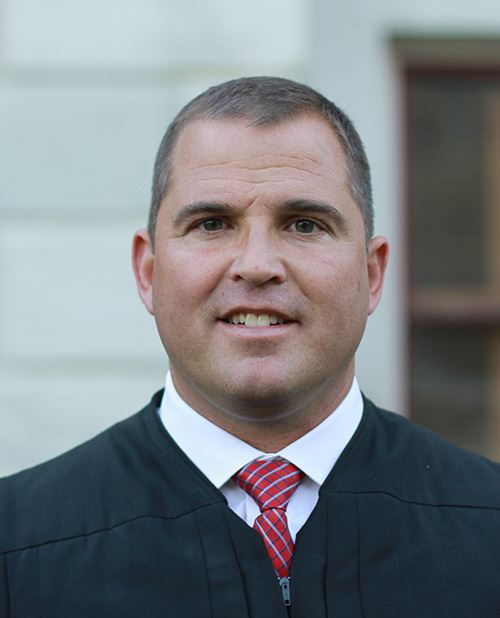AI in Court: The Teising Case
LAFAYETTE, IN — A court hearing Friday spotlighted the evolving role of artificial intelligence in legal proceedings, as former Wabash Township Trustee Jennifer Teising faced allegations about her use of AI tools while representing herself in an $820,000 lawsuit against township officials.
The case illustrates both the potential benefits of AI for self-represented litigants and the critical importance of human oversight when using such technology in legal matters.
The Power and Pitfalls of Legal AI
Teising acknowledged using AI while preparing court documents, though she maintained she “didn’t just copy and paste out of AI.” The controversy arose when township attorney Ryan Sterling identified citations to nonexistent case law and misinterpreted legal precedent in her filings.
For self-represented litigants like Teising, who has been without legal counsel since June when her attorney withdrew, AI tools can provide valuable assistance in navigating complex legal procedures and research. These technologies can help level the playing field for individuals who cannot afford ongoing legal representation, offering guidance on legal terminology, document formatting, and potential case precedents.
However, Judge Sean Persin emphasized the essential requirement of verification, regardless of how legal arguments are generated. “If you interpret a case incorrectly, you’re not doing anything unethical,” Persin explained during the hearing. “If you cite something and say ‘Judge, you have to rule this way because of this case and this law,’ and that’s not actually the law, that’s when I start having problems with it.”
A Measured Judicial Response
Despite township attorneys requesting a $5,000 fine for alleged rule violations, Judge Persin took a more educational approach. Rather than imposing immediate financial penalties, he struck the problematic arguments from the court record and issued a clear warning about future conduct.
The judge’s measured response suggests recognition that AI tools are becoming increasingly common in legal practice, and that establishing clear guidelines through education may be more effective than punitive measures alone. Persin warned that continued misuse could result in Teising paying the township’s attorney fees or facing dismissal of her lawsuit, setting clear boundaries while allowing her to continue her case.
“When you file an appearance and then you start citing a law that doesn’t stand… in my mind, this is a big deal,” Persin told Teising, characterizing such errors as “akin to fraud on the court.” Yet his decision not to impose fines immediately reflects an understanding that the legal system is still adapting to AI integration.
The Verification Imperative
The specific errors in Teising’s filings underscore why human verification remains non-negotiable. According to Sterling’s court documents, one cited case did not exist at all, while another was quoted as addressing “lost wages and loss of earning capacity” when it actually never mentioned those topics. These mistakes “strongly suggest she relied on such a tool to draft her response and did not independently verify the veracity of its output before filing it with the court,” Sterling wrote.
Teising defended herself by claiming a “clerical error” and insisting she had cited the “wrong number with the wrong case.” She maintained that she had actually read the nonexistent case, suggesting it had been “transferred and merged between jurisdictions” after she wrote the citation.
Judge Persin directly challenged this characterization: “If you cite bad law with the judge, and the judge relies on it, that judge will never forget that ever. So I want to make sure you’re not minimizing this by calling it a clerical error. It’s more than that.”
Background of the Case
Teising filed her defamation lawsuit earlier this year against Wabash Township and its officials, claiming they wrongfully forced her from office in 2022 following her conviction on 21 theft charges. The Indiana Supreme Court later overturned those convictions, forming the basis for her current legal action.
She has been representing herself since her attorney, Thomas Little, withdrew from the case in June. In court filings, Teising alleged that township attorneys forced Little’s withdrawal by threatening him with sanctions, though she provided no additional details.
Friday’s hearing was originally scheduled to address the township’s motion to dismiss her lawsuit. However, hours before the hearing, Teising filed amended documents to correct spelling errors and clarify sentences, requiring the township’s attorneys to request additional time to respond. A new hearing is scheduled for December 1.
The Future of AI in Legal Practice
The Teising case reflects a broader trend in courtrooms nationwide, where artificial intelligence is increasingly used as a research and drafting tool. When properly employed with rigorous verification, AI can enhance legal efficiency, help attorneys identify relevant precedents more quickly, and make legal resources more accessible to self-represented parties.
Legal technology experts note that AI tools can be particularly valuable for:
- Conducting preliminary legal research across vast databases
- Identifying potentially relevant case law for further review
- Drafting initial document structures and templates
- Explaining complex legal concepts in accessible language
- Helping self-represented litigants understand procedural requirements
However, AI systems like ChatGPT are known to occasionally produce “hallucinations”—convincing but entirely fabricated information, including nonexistent legal cases with realistic-sounding citations. This makes independent verification by qualified legal professionals essential before any AI-generated content is submitted to courts.
The key lesson from Teising’s case is not that AI should be avoided in legal practice, but that it must be used responsibly. As Judge Persin’s approach demonstrates, courts are recognizing AI as an inevitable part of modern legal work while establishing clear expectations: attorneys and litigants remain fully responsible for the accuracy and legitimacy of everything they file, regardless of the tools used to create it.
For self-represented litigants and attorneys alike, AI represents a powerful tool—but like any tool, its value depends entirely on the skill and diligence of the person wielding it.
Read more about AI trends in the Watchdog’s Blog

